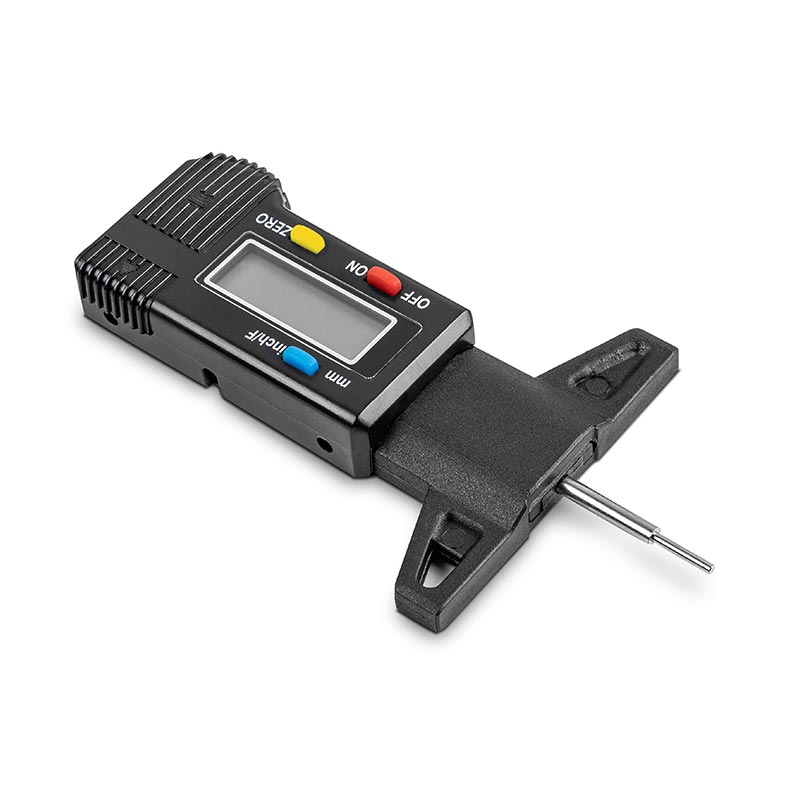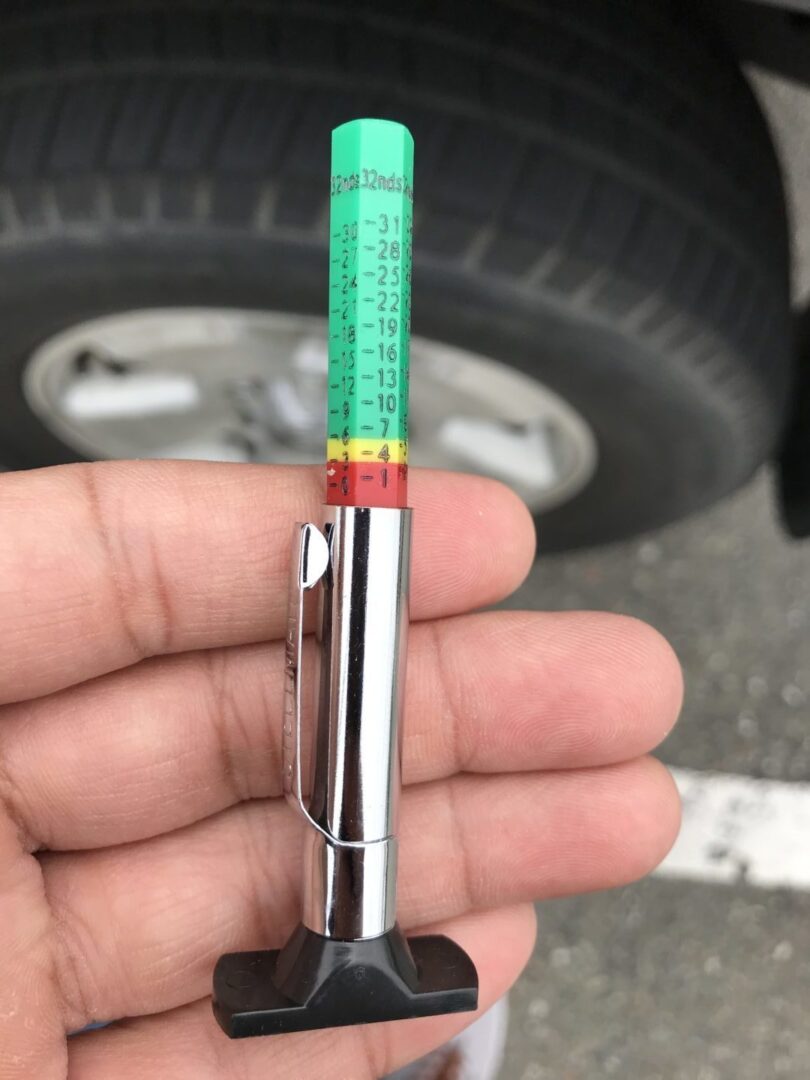

- Tread depth gauge how to#
- Tread depth gauge drivers#
- Tread depth gauge driver#
- Tread depth gauge professional#
If the legal treadwear limit has been reached, the tyre must be removed and replaced.Ī tyre professional must be consulted if there is abnormal wear or a difference in wear between two tyres on the same axle. It also involves getting them checked regularly, both inside and outside, by a tyre specialist. The depth of the main grooves of the tyres must be at least 1.6 mm on 3/4 of the tyre tread.Ĭhecking for wear must always be carried out at several points across the circumference and width of the tyre. If the rim stands proud of the tyre, on the other hand, then the partially worn tyre is no longer valid and needs to be replaced forthwith. If it does, then there is sufficient tyre tread depth remaining. So basically, all motorists need to do is insert a coin into the grooves around their part-worn tyres and check whether the rim of the coin disappears from their view. It is possible because the rim on a 20p coin is just the right size for measuring a depth of 1.6 mm. *The following tyre lines are designed to offer high level of longevity and performance that lasts: MICHELIN CrossClimate², MICHELIN Primacy 4+, MICHELIN Pilot Sport 4, MICHELIN Alpin 6 and MICHELIN Pilot Alpin 5.Īnother way to check the tread of tyres effectively is to use a 20 pence coin instead of a purposely built tread depth gauge.
Tread depth gauge how to#
So, it's important to know how to properly check the remaining tread on a car's tyres. In the UK, cars fail the MOTs if the tyres are too worn. When worn tyres reach a certain point, it is no longer legal to drive on them. That’s what, at Michelin, we call “Performance made to last”! The latest MICHELIN tyres are designed to deliver excellent longevity and high levels of performance from the first to the last kilometer* throughout the tyre’s life.
Tread depth gauge driver#
While you’re checking tread depth on your tires, be sure to also check your tire pressure and look for signs of unusual wear as well as signs of damage and aging, such as cracks, bulges or abrasions.Of course, as tyres are made from rubber compounds, the tyre tread will inevitably wear down over time due to a variety of factors including vehicle type (Hybrid, electric, or petrol cars), driver behaviour, climate, temperature, the roughness of the road surface, the mechanical condition of the vehicle (camber settings, wheel alignment, wheel balance, suspension, transmission…), maintenance, tyre pressure… Tires at or above the recommended tread depth level can give you better traction, reduced risk of punctures and the ability to push away water to help you avoid hydroplaning on wet roads. If you can see all of the head, your tire tread depth is less than. Why you need tires with sufficient tread depth Insert a penny into your tires tread groove with Lincolns head upside down and facing you. If your tread depth wears to those levels, your tires are considered bald and a safety hazard. 2/32” Your tires are legally bald and need to be replaced.Īccording to most manufacturers, and even the law in most provinces, your tires should be replaced when the tread depth reaches 4/32” in the winter and 2/32″ in the summer.If it’s a winter tire, 4/32” is the minimum. 4/32” – 3/32” Seriously consider replacing your tires as soon as possible.5/32” If wet roads are a concern, consider replacing your tires.6/32” Your tire’s tread depth is sufficient for 3-seasons but nearing minimum for a winter tire.Here’s what you might see, and what you should do: Find the shallowest groove of the tread and insert the pin of the gauge until the base is flush with the tire.
Tread depth gauge drivers#
Tire tread depth gauges are available at many gas stations, and some drivers like to keep one in the glove compartment for easy access. Tire tread depth gauges are a fast and easy way to determine with certainty if your tires are still safe for use or if they need to be replaced. How to check tread depth with a tire tread depth gauge If these indicators are worn, replace your tires right away.ģ. These raised bars-often six-are moulded into the grooves of the tire tread to mark the minimum allowable tread depth.



Some tires have built-in tread wear indicators. How to check tread depth with tire tread wear bars or indicators


 0 kommentar(er)
0 kommentar(er)
